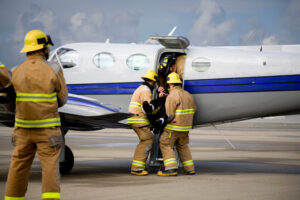Flight Planning Update Eliminates Paper Charts
Exciting news for international flight planning! ForeFlight has introduced ocean plotting capabilities to their mobile app, eliminating the need for paper charts.
With oceanic plotting, pilots can easily:
- Plan flights,
- Select diversion airports,
- Determine equal time points,
- Conduct GNE checks, and
- Record position reports.
Oceanic Plotting Accuracy
Accurate ocean plotting is a crucial skill for pilots flying over oceans. It ensures safe and efficient navigation, prepares pilots for emergency situations, helps them understand and anticipate weather conditions, and maximizes the use of onboard navigation technologies.
- Overall Navigation and Safety: The vast expanse of the ocean makes it a challenging environment to navigate. Accurate ocean plotting is essential for pilots to determine their precise location, direction, and speed. Without this information, they risk getting lost, which could lead to fuel exhaustion and potential accidents. For example, in 1979, a sightseeing flight over Antarctica deviated off course due to incorrect coordinates and crashed into Mount Erebus, killing all on board.
- Emergency Situations: In times of emergencies like engine failures or severe weather conditions, accurate ocean plotting allows pilots to identify the nearest suitable airport for an emergency landing. For instance, Captain Chesley “Sully” Sullenberger used his navigational skills to safely land US Airways Flight 1549 on the Hudson River after both engines failed.
- Wave Turbulence: Wave turbulence refers to disturbances caused by wind waves on the ocean surface. These can cause unexpected changes in altitude and might even lead to loss of control. Accurate ocean plotting allows pilots to anticipate these conditions, adjust their altitude, and maintain the safety of the aircraft.
- Ocean Currents: Ocean currents can significantly influence wind patterns. Understanding these currents and their impact on winds helps pilots plan their routes more efficiently, saving time and fuel. The Bermuda Triangle is infamous for its unpredictable weather and ocean currents, making accurate ocean plotting crucial in this region.
- Precipitation: Heavy rain, snow, or fog can severely limit visibility and make navigation challenging. By accurately plotting their course, pilots can avoid areas with severe precipitation, ensuring a safer and smoother flight.
- Mastering Skills: Pilots flying over oceans need to master specific skills such as instrument flying, long-range navigation techniques (like celestial navigation), and understanding weather patterns. They also need to be proficient in using advanced navigation systems such as GPS and INS (Inertial Navigation System).
- Technology for Accurate Plotting: Modern aircraft are equipped with advanced navigation systems like ADS-B (Automatic Dependent Surveillance–Broadcast), which provides real-time tracking, and FMS (Flight Management System), which automates in-flight tasks. These technologies rely heavily on accurate ocean plotting to function effectively.
The ForeFlight software automatically adjusts performance estimates based on actual time and fuel data at each waypoint. Access to this feature requires a ForeFlight business user account with Dispatch, available as a per-user add-on option.
After the flight, pilots can sign, save, archive, or email the plot as a PDF. This tool simplifies aviation planning for oceanic crossings while ensuring compliance with regulations, enhancing safety measures.









